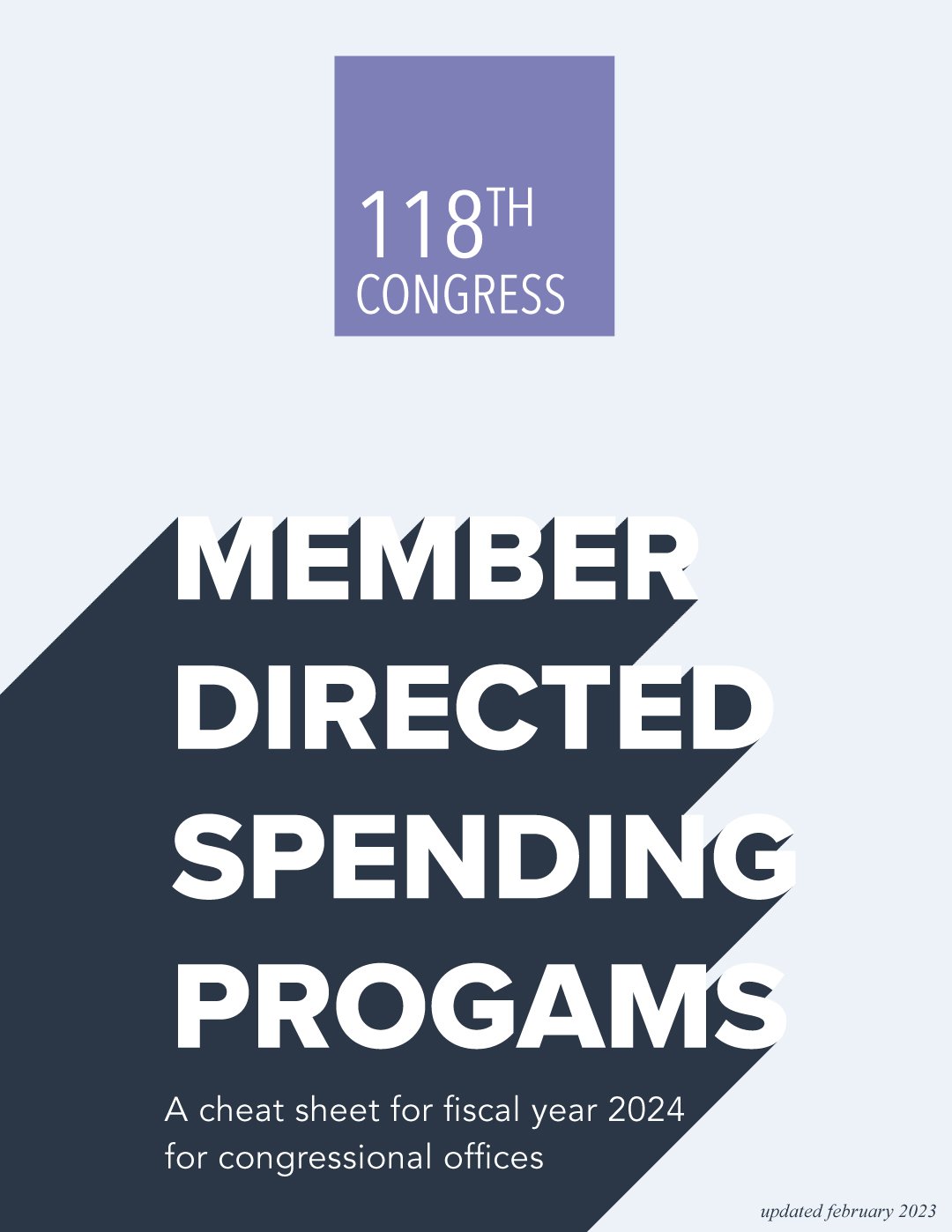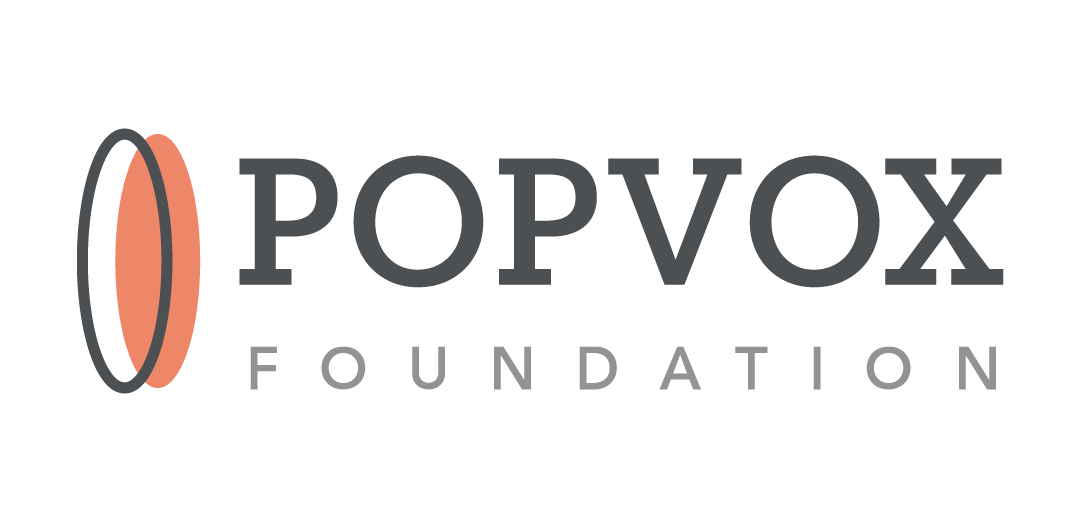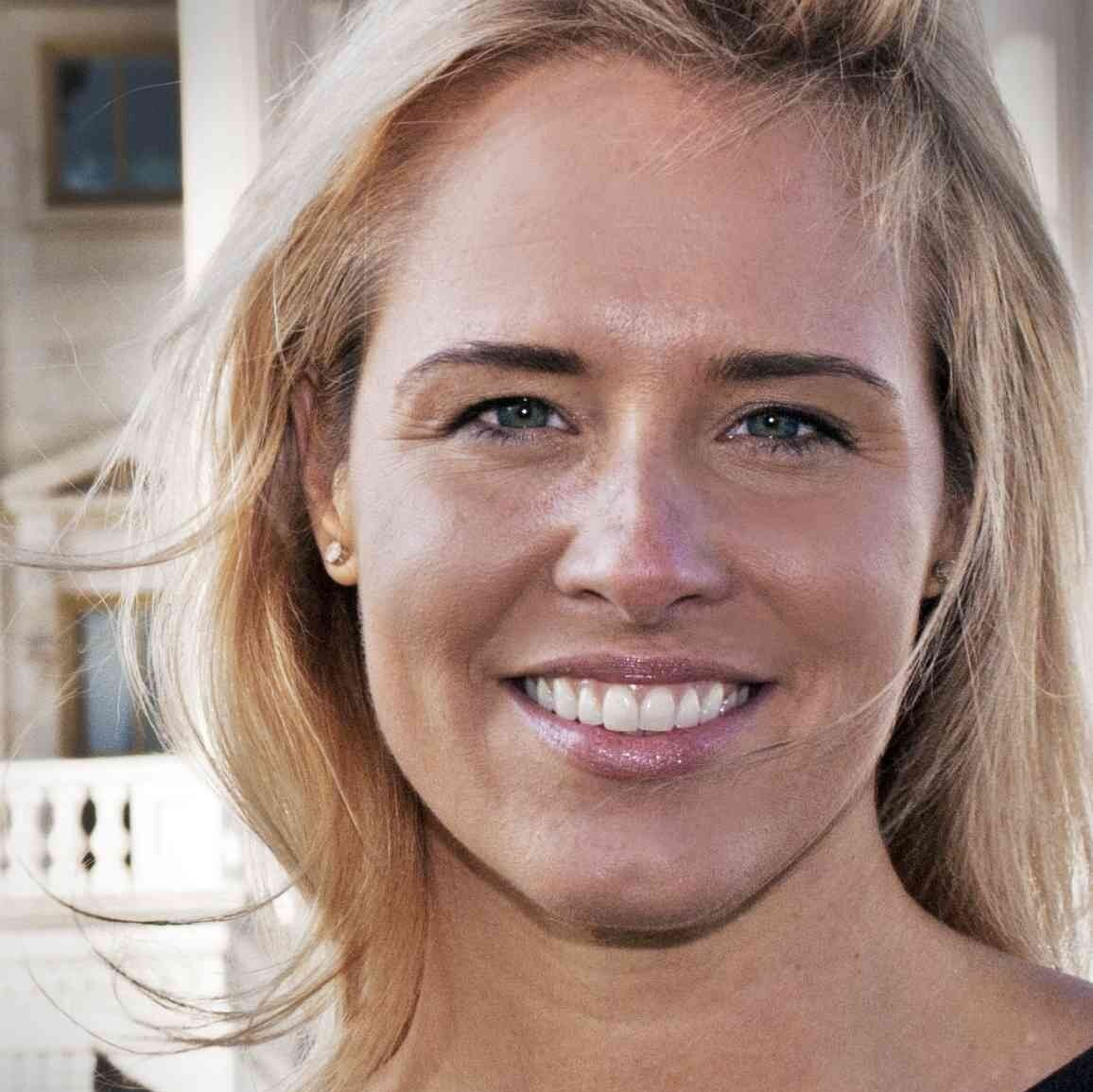A Cheat Sheet for FY24 Member-Directed Spending Programs for Congressional Staffers
Senate
House
Resources on Federal Nexus Question & Other Member-Directed Spending Concerns
Subcommittee Guidance Documents
Subcommittee Staff
CRS
GAO’s Tracking the Funds Site
Guide for Congressional Staff
8-Step Guide to Vetting Non-profits
FY24 Eligible Accounts for Earmark Funding
Energy and Water Development and Related Agencies
Legislative Branch
Agriculture, Rural Development, Food and Drug Administration, and Related Agencies
Financial Services and General Government
Interior, Environment, and Related Agencies
Commerce, Justice, Science, and Related Agencies
THUD
Military Construction, Veterans Affairs, and Related Agencies
Homeland Security
SFOPS
Labor, Health and Human Services, Education, and Related Agencies
Defense
I. Program Changes in FY24
Some things haven’t changed from the 117th Congress:
For-profit requestors are still ineligible.
Projects will still be subject to GAO review.
Members’ personal requests must be posted online.
Committees will also separately accept programmatic requests.
House requests require evidence of community support.
House offices may only submit 15 requests.
Senate
No major changes on your end. Carry on!
House
A few significant departures from last year:
The House has clarified for FY24 that it will limit House Member requests to 0.5% of Federal discretionary spending. The total amount of funding available for earmarks in both chambers will remain at 1%.
Certain categories of spending have been eliminated:
No member requests for commemorations, memorials, or museums will be accepted.
No member requests for the Labor-HHS, Financial Services-General Government, or Defense subcommittees will be accepted.
Subcommittees provided stricter guidelines for individual accounts. Depending on the subcommittee, this may show up as the chair’s expressed priorities, or additional questions to answer for each request.
Projects have to certify a “federal nexus” for each request, meaning offices have to be able to point to relevant law authorizing projects to connect with the project request.
TBD: how tighter House restrictions will work with the continuation of the Senate program
II. Resources on Federal Nexus Question & Other Member-Directed Spending Concerns
Subcommittee Guidance Documents
Both the House (appropriations.house.gov) and Senate (appropriations.senate.gov) have put effort into making their Subcommittee Guidance Documents much more user-friendly than we’ve seen in the past.
Detail varies by account, but some include:
▪ Sample request language
▪ Sample disclosure templates
▪ References to relevant US code (for the House side) and more!
Subcommittee Staff
As in previous years, subcommittee staff have been available to take Member questions on specific accounts and requests. Review published guidance first, but don’t hesitate to use them as a resource.
CRS
CRS experts are indispensable in so many areas, including appropriations.
GAO’s Tracking the Funds Site
For new offices looking to review requests from last year, GAO’s site has great insight and examples.
Guide for Congressional Staff
Our full guide to member-directed spending for congressional staff has more in-depth materials on setting up and running a transparent and accountable process.
8-Step Guide to Vetting Non-Profits
Review our 8-step guide to vetting nonprofits that aren’t already in your network, or projects you may not be familiar with. Tip: this is a great task for interns!
FY24 Eligible Accounts for Earmark Funding
An updated list of eligible accounts for earmark funding
III. Subcommittee Deadlines
The House has identified 7 subcommittees for members to make CPF requests which are shown below. The Senate has identified 9 subcommittees for members to make CDS requests which are shown below.
Energy and Water Development and Related Agencies
House: March 31 [CPF and programmatic requests]
Senate: March 30 [CDS and programmatic requests]
Legislative Branch
House: March 24 [non-CPF requests only]
Senate: March 30 [non-CDS requests only]
Agriculture, Rural Development, Food and Drug Administration, and Related Agencies
House: March 24 [CPF and programmatic requests]
Senate: March 31 [CDS and programmatic requests]
Financial Services and General Government
House: March 24 [non-CPF requests only]
Senate: March 31 [CDS and programmatic requests]
Interior, Environment, and Related Agencies
House: March 24 [CPF and programmatic requests]
Senate: April 4 [CDS and programmatic requests]
Commerce, Justice, Science, and Related Agencies
House: March 31 [CPF and programmatic requests]
Senate: April 5 [CDS and programmatic requests]
THUD
House: March 31: [CPF and programmatic requests]
Senate: April 6 [CDS and programmatic requests]
Military Construction, Veterans Affairs, and Related Agencies
House: March 31 [CPF and programmatic requests]
Senate: April 7 [CDS and programmatic requests]
Homeland Security
House: March 29 [CPF and programmatic requests]
Senate: April 11 [CDS and programmatic requests]
SFOPS
House: March 24 [non-CPF requests only]
Senate: April 12 [non-CDS requests only]
Labor, Health and Human Services, Education, and Related Agencies
House: March 24 [non-CPF requests only]
Senate: April 13 [CDS and programmatic requests]
Defense
House: March 29 [non-CPF requests only]
Senate: April 14 [non-CDS requests only]
For more information on specific eligible accounts for each subcommittee, please see our updated list of open accounts for FY24.
IV. Sample Timeline
With deadlines and guidance published in both chambers, it’s time to kick your constituent-facing operation into gear! The following timeline and checklist is a sample to help your team stay organized.
✅ By March 6th
Finalize your intake form
Set your internal deadlines for application
Set up your website with information on your process and your team’s deadlines
Push information about your process out through your networks:
» Newsletter
» Social Media
» Personal emails
✅ Week of March 6th
March 7th: host informal Q&A webinar or drop-in office hours for interested constituents
March 10th: soft deadline for constituents to have submitted at least a partial application
✅ Week of March 13th
Review partially-submitted applications
Perform initial vetting
House: start research for federal nexus
March 14th: final deadline for constituents to submit all required information, including evidence of community support (House)
March 17th: prepare eligible requests for Member review and decision
✅ Week of March 20th
Final vetting and Member decision on requests
Prepare disclosure statements for requests, add signatures
House: finalize research to identify federal nexus for requested projects
March 24th: begin to submit requests to the relevant Committee portals
✅ March 27th: Notify applicants of Member decisions
✅ April 10th–23rd: Post requests to official Member website as downloadable CSV
Developed By
Bipartisan Policy Center
The Bipartisan Policy Center is a Washington, DC-based think tank that actively fosters bipartisanship by combining the best ideas from both parties to promote health, security, and opportunity for all Americans. Our policy solutions are the product of informed deliberations by former elected and appointed officials, business and labor leaders, and academics and advocates who represent both sides of the political spectrum.
POPVOX Foundation
POPVOX Foundation works “to inform and empower people and make government work better for everyone.” This includes reimagining the concept of “civic infrastructure,” and providing new ways for government to share information and engage the public, with an emphasis on diverse participation and rebuilding public trust.
Franz Wuerfmannsdobler
Franz Wuerfmannsdobler is a Senior Advisor with the Bipartisan Policy Center. He has more than two decades of congressional experience. During his tenure on Capitol Hill, he worked in the offices of U.S. Senators Robert Byrd, Byron Dorgan, and Chris Coons, the last of which he served as the Deputy Chief of Staff and Senior Policy Advisor. He also served on the Senate Appropriations Committee. His policy portfolio has included energy, environment, science and technology, appropriations, and budget issues. Building on these experiences, he is dedicated to improving public discourse and restoring civic trust.
Marci Harris
Marci is CEO and cofounder of POPVOX, Inc., a nonpartisan platform for civic engagement and Executive Director and Co-Founder of the POPVOX Foundation. She later served as counsel to the chairman of the Ways and Means Health Subcommittee in the U.S. House of Representatives, working on the team that drafted the Affordable Care Act. Marci left Capitol Hill in 2010 to create POPVOX.com and has continued to work at the intersection of technology and policy. Marci is a lecturer at San Jose State University and the University of California Berkeley Haas School of Business and an adjunct professor at the University of San Francisco School of Management.
Anne Meeker
Anne is a civic process and democratic engagement nerd, and a former House district staffer. She was a founding member of the POPVOX Foundation team as Director of Special Initiatives. She previously served as Director of Constituent Services for Congressman Seth Moulton, where she worked to use data and technology to deliver smarter casework services to residents of the MA06. Anne holds a bachelor's degree in Anthropology from the University of Oxford (St. Hugh's College), and an MSc in History from the London School of Economics, where she wrote her thesis on presidential memoir.






